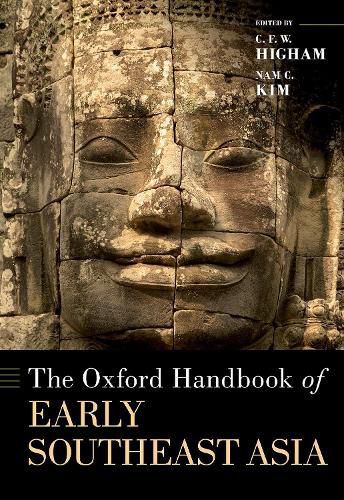Readings Newsletter
Become a Readings Member to make your shopping experience even easier.
Sign in or sign up for free!
You’re not far away from qualifying for FREE standard shipping within Australia
You’ve qualified for FREE standard shipping within Australia
The cart is loading…






Southeast Asia ranks among the most significant regions in the world for tracing the prehistory of human endeavor over a period in excess of two million years. It lies in the direct path of successive migrations from the African homeland that saw settlement by hominin populations such as Homo erectus and Homo floresiensis. The first Anatomically Modern Humans, following a coastal route, reached the region at least 60,000 years ago to establish a hunter gatherer tradition that survives to this day in remote forests.From about 2000 BC, human settlement of Southeast Asia was deeply affected by successive innovations that took place to the north and west, such as rice and millet farming. A millennium later, knowledge of bronze casting penetrated along the same pathways. Copper mines were identified and exploited, and metals were exchanged over hundreds of kilometers. In the Mekong Delta and elsewhere, these developments led to early states of the region, which benefitted from an agricultural revolution involving permanent ploughed rice fields. These developments illuminate how the great early kingdoms of Angkor, Champa, and Funan came to be, a vital stage in understanding the roots of the present nation states of Southeast Asia. Assembling the most current research across a variety of disciplines–from anthropology and archaeology to history, art history, and linguistics–The Oxford Handbook of Early Southeast Asia will present an invaluable resource to experienced researchers and those approaching the topic for the first time.
$9.00 standard shipping within Australia
FREE standard shipping within Australia for orders over $100.00
Express & International shipping calculated at checkout
Southeast Asia ranks among the most significant regions in the world for tracing the prehistory of human endeavor over a period in excess of two million years. It lies in the direct path of successive migrations from the African homeland that saw settlement by hominin populations such as Homo erectus and Homo floresiensis. The first Anatomically Modern Humans, following a coastal route, reached the region at least 60,000 years ago to establish a hunter gatherer tradition that survives to this day in remote forests.From about 2000 BC, human settlement of Southeast Asia was deeply affected by successive innovations that took place to the north and west, such as rice and millet farming. A millennium later, knowledge of bronze casting penetrated along the same pathways. Copper mines were identified and exploited, and metals were exchanged over hundreds of kilometers. In the Mekong Delta and elsewhere, these developments led to early states of the region, which benefitted from an agricultural revolution involving permanent ploughed rice fields. These developments illuminate how the great early kingdoms of Angkor, Champa, and Funan came to be, a vital stage in understanding the roots of the present nation states of Southeast Asia. Assembling the most current research across a variety of disciplines–from anthropology and archaeology to history, art history, and linguistics–The Oxford Handbook of Early Southeast Asia will present an invaluable resource to experienced researchers and those approaching the topic for the first time.